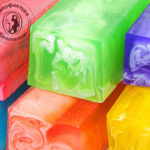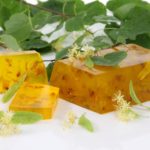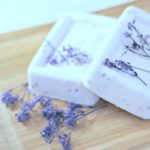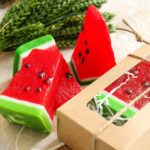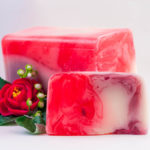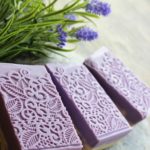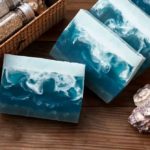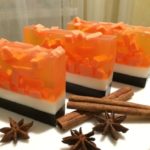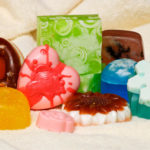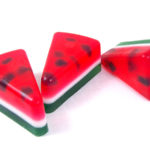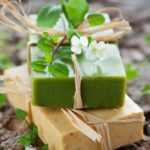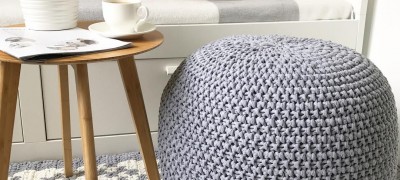Soap base - do-it-yourself composition and preparation
In our time, soap making is gaining more and more popularity. After all, this type of activity is truly exciting, it helps to distract from the daily routine by creating with your own hands exactly the soap that you would like. Also, its relevance is explained by the fact that all the ingredients can be selected individually, taking into account all the features of your skin.

What is a soap base
Soap base is a technological soap made by saponification of fatty acids. Soap production is a fairly simple process by mixing fatty acids or oils with alkali. The result is the soap itself and the glycerin. In home soap making, this is called the base, to which various fragrances, cosmetic or medical additives are already added.

The most common soap base contains:
- Distilled water;
- Alkali;
- Glycerin (it is responsible for the tenderness and hydration of the skin);
- Surfactants (surfactants);
- Essential oils (selected individually depending on the desired result).
So a do-it-yourself soap base from scratch is created from almost those ingredients that every housewife already has in the kitchen. The main advantages of self-made soap are precise confidence in the components and a clear selection of ingredients for the skin's own peculiarity.

Additional Information! The history of soap began about six thousand years ago. At different times, quite unusual, although no less effective, means were used. The easiest way to cleanse your skin is to use sand. Wood ash mixed with water was also used for washing.

Types of soap base and its composition
The most common soap bases today are white, clear, and free-standing - organic. Transparent base for soap, also called glycerin, and it softens the skin well, providing hydration and softness for a long time. The white base contains an additive of titanium dioxide, which is often used in cosmetology to maintain skin tone. The organic base is suitable for sensitive skin. It contains coconut and palm oil and uses a minimum of chemicals.

Note! To give your skin a healthy appearance, you can use ginger oil, which increases blood circulation. Chamomile oil has an immunostimulating effect. Rosemary is great for skin conditions, speeding up the healing process.
Soap base can be not only in solid form, and can be in three forms:
- Solid - used for making classic soaps or artwork.
- Soft - used for scrubs, cream soaps.
- Liquid - Used to make liquid soaps, shower gels, and detergents.
Transparent and white base
Thanks to the large amount of glycerin included in the transparent base, it perfectly moisturizes and nourishes the skin. It is thanks to transparency that you can achieve the desired color depth, which cannot be obtained with other bases. Great for a bright saturated palette or a delicate transparent layer with a certain shade.

The white base has shades from snow white to beige. It includes E171 dye, aka titanium dioxide. This is the main distinguishing feature of raw materials.

Organic base
It is the most sought after base for its natural ingredients. Has a yellowish tint, as it is devoid of a whitening component. It can be easily distinguished by its appearance. It looks like a transparent base.

Creamy soap base
Ideal for creating scrubs, peels. It will help you create jewelry on solid soap. It looks like a white grain cream. Easy to use and does not require additional "cooking".

To prepare a scrub, it is necessary to add base and essential oils to the soapy soft base and do not forget the abrasive (exfoliating) particles. In the form of natural, you can use: grape and apricot seeds, sugar, salt, coffee and oatmeal.

Liquid soap base
It is a clear, jelly-like liquid. It has a number of advantages: it foams well, perfectly cleanses the scalp and face, soothes irritated skin and rinses off perfectly. Has a neutral pH level.

Where can you buy a soap base
The soap base can be purchased from specialized soap shops or ordered online to be delivered to the post office or home. But it is worth remembering that hand-made soap will always be the best.

How to make a soap base with your own hands
First of all, you need to worry about safety measures: purchase gloves, glasses and a respirator. You will also need instrumentation, such as a balance, a pH meter, or test strips to make sure the alkali is neutralized and the soap is ready and ready to use. There are several types of home soap making.

Making soap from baby soap is the best way for those who are just starting their first steps in this matter. Store baby soap must be crushed in any convenient way and melted in a water bath, after which we add the necessary base and essential oils. Herbal teas can be added to make the soap even more beneficial. The most important advantage of this method is the availability and cheapness of the source material (baby soap).

But along with this, you will have to take into account the disadvantages, namely the own smell of baby soap. For this reason, it is advisable to choose non-scented soaps to avoid an unpleasant end odor. It is also worth remembering that soap melts for a long time and you have to be patient. Also, unfortunately, this method will not work if the transparency of the soap is thought.

Soap from scratch
It is not for nothing that this method has such a name, because soapmakers follow each of the processes of creating soap from the beginning to the final result. To start the process, you need to make sure that the room is well ventilated. We have not forgotten about protective equipment: gloves, respirator, glasses. Since you have to work with alkali, it is necessary to prepare a neutralizer: vinegar essence, citric acid, or you can use sour fruit juices.

Depending on what kind of base you want to get, it is used:
- The solid base is alkali in the form of caustic soda;
- The liquid base is potassium hydroxide.
The approximate ratio of all components (the amount and proportion may vary depending on the specific recipe):
- Coconut oil - 1 part;
- Castor or palm oil - 1 part;
- Water and alkali - water 33%;
- Glycerin - 30-95% by weight of soap before adding glycerin.

It is necessary to prepare soap in any dish that is not afraid of heating. Stir with a wooden spatula only.
Pour alkali into a bowl of water. Stir until completely dissolved. Next, we prepare the oil base, this will help the soap maker calculator (can be found on the Internet), which will accurately determine the required proportion of oils for the soap base of the required mass. Then liquid oils are applied. And everything is thoroughly mixed again.

Important! It is necessary to check that the alkaline solution and the oils are at the same temperature approximately 40-50 degrees.
If you notice lumps, you can get rid of them by filtering. Bring the soap to readiness in a water bath. Ph - measures will help to determine readiness, it should show a value of 7-8 units, which means the readiness of our soap.

Also in practice they use 2 types of soap making from "scratch":
- Hot method - during the soap making process, all the ingredients are heated. With this method, you use the soap immediately after setting.
- Cold method - the ingredients themselves heat up during the reaction of interaction with alkali. Soap needs time, about 4-6 weeks, for the process of neutralizing the alkali to go through.

Handmade soap is a great option as a hobby, additional income. But the main feature of home soap making is full control of the entire process and precise confidence in the composition.

Video: secrets of soap making - soap base








